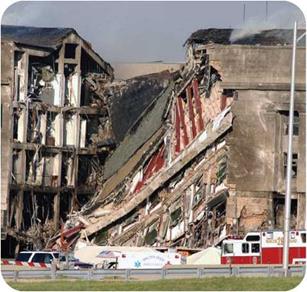Tightening Security
Such attacks highlighted a new threat to air travel and the need for tighter security at airports. The Hague Convention of 1970, an international agreement signed by more than 130 nations, was drawn up to combat skyjacking and stop terrorists from escaping to “friendly” countries.
From 1973, the Federal Aviation Administration in the United States has required all airlines to screen passengers and their baggage to prevent people from carrying weapons-or objects that might be used as weapons-onto flights. Airports tightened security procedures, especially at check-in and during baggage handling. Armed guards, called sky marshals, traveled on some flights.
When an airplane is hijacked, military craft may escort it to a landing field
agreed to by the authorities. After it has landed, troops and police will surround the hijacked aircraft while skilled negotiators try to talk the skyjackers into releasing the hostages and surrendering. Armed assault also may be used. In 1976, following the hijacking of an Air France flight, Israeli commandos flew in to attack the Palestinian hijackers, who were holed up at Entebbe Airport in Uganda, Africa. The commandos rescued more than 100 hostages. In most hijacking situations, however, airport and law enforcement agencies usually try to avoid a gun battle, which risks injuring or even killing innocent hostages.
Skyjacking incidents decreased in the United States during the 1980s and 1990s, but violent terrorist incidents continued to take place in other parts of the world. Some of these skyjackings resulted in airplanes crashing. In 1996, a stolen Ethiopian airliner crashed into the Indian Ocean. About fifty passengers
|
|
managed to survive, but the crash killed 125 of the people onboard.











